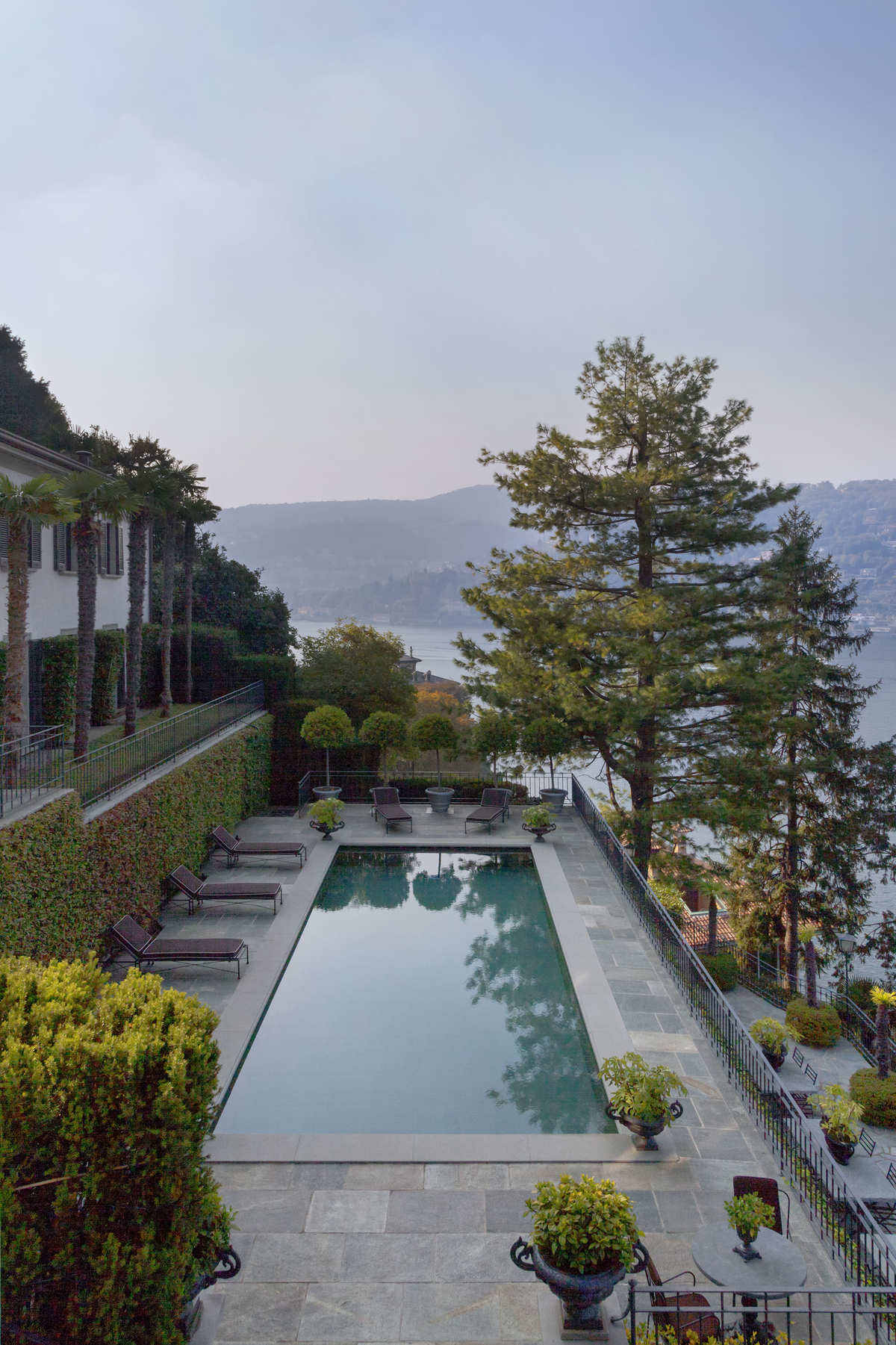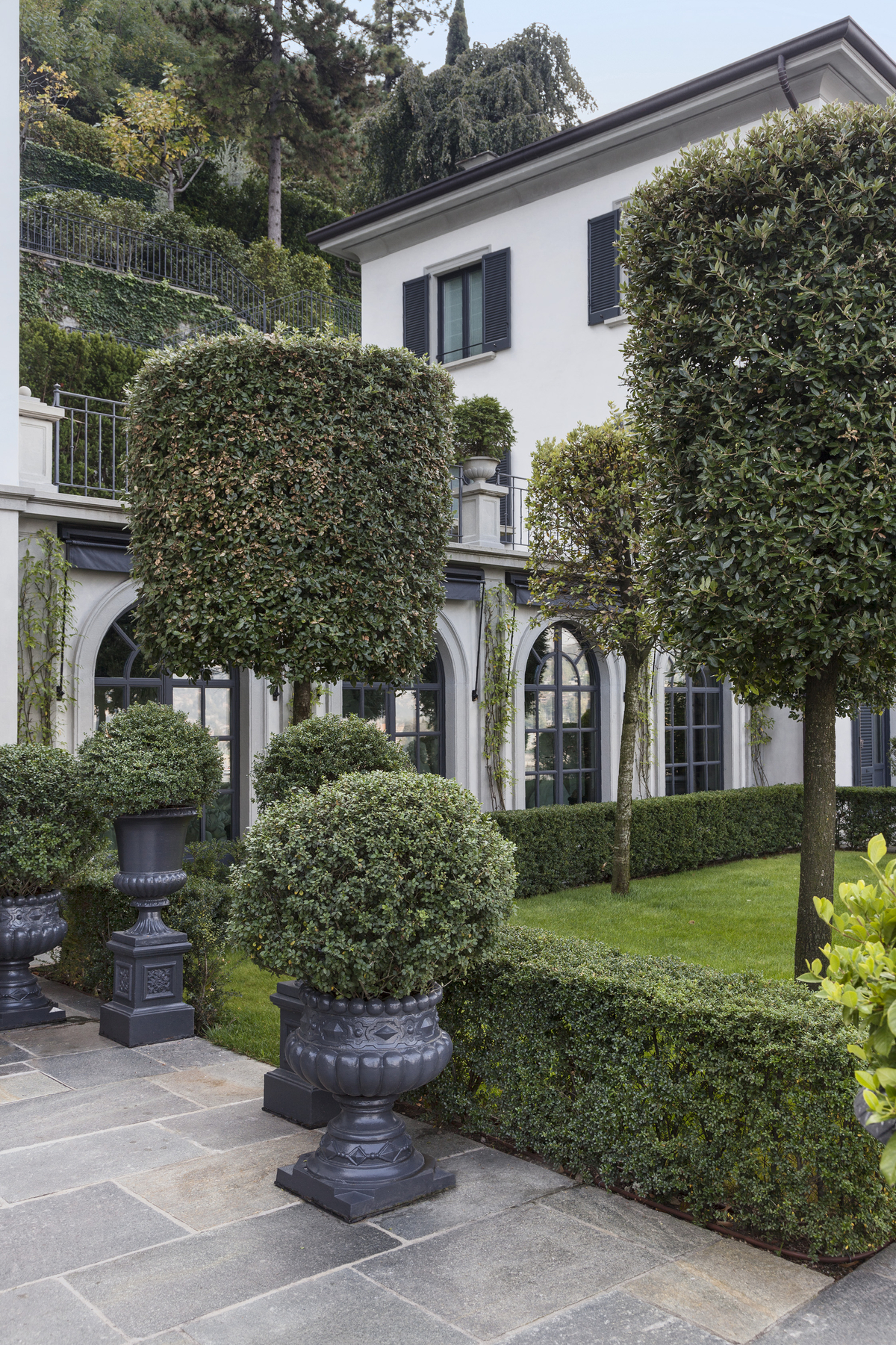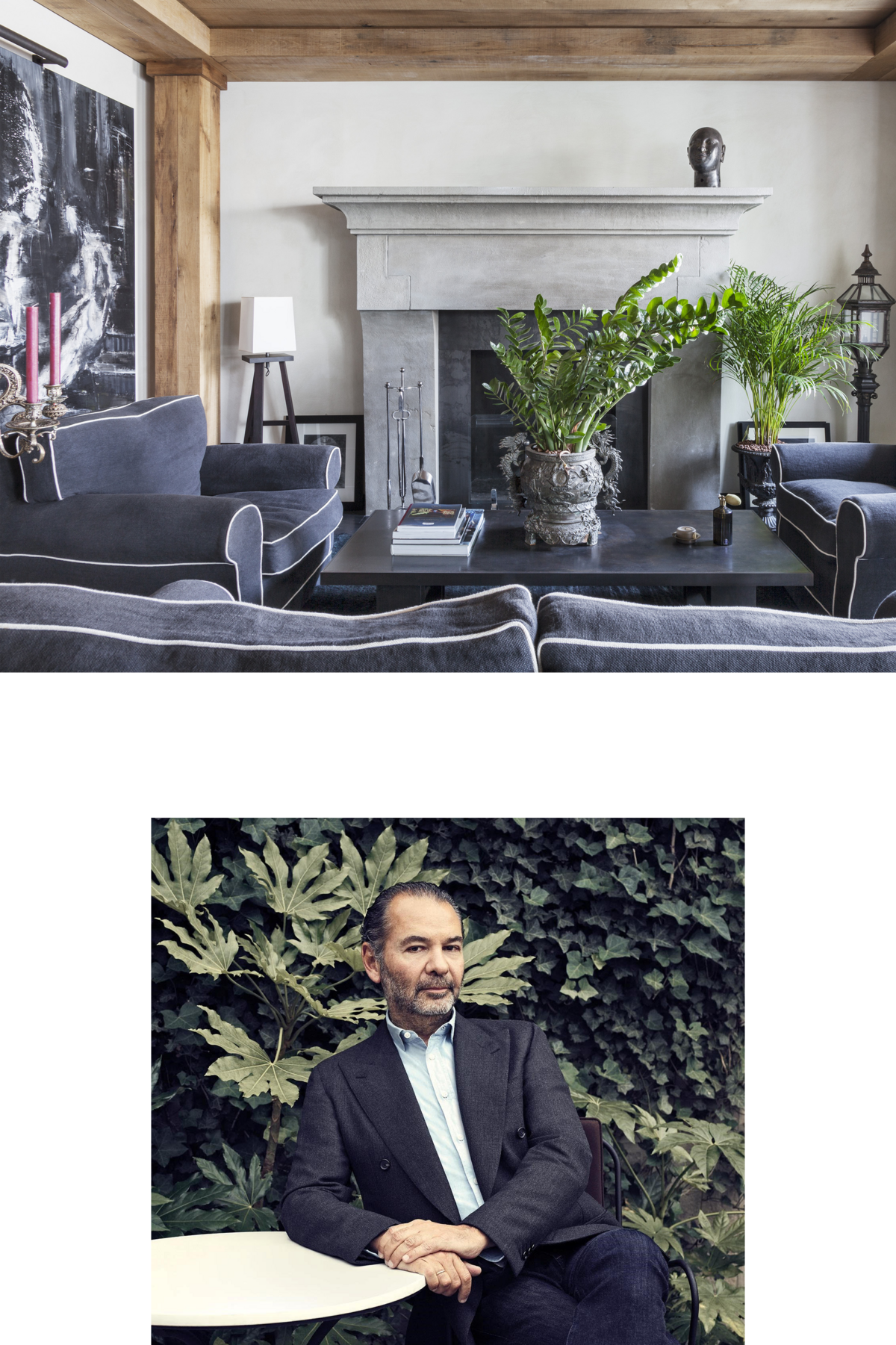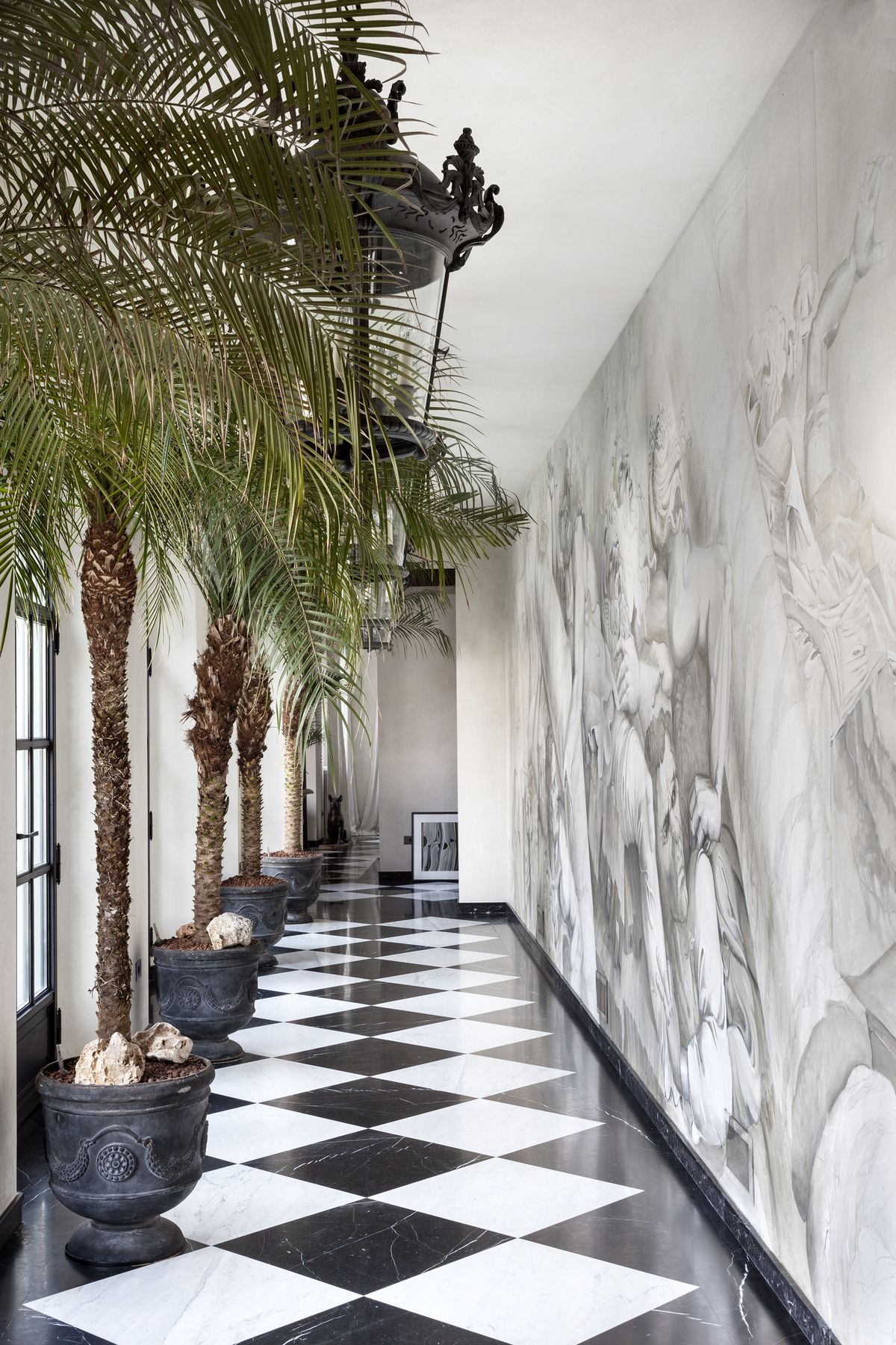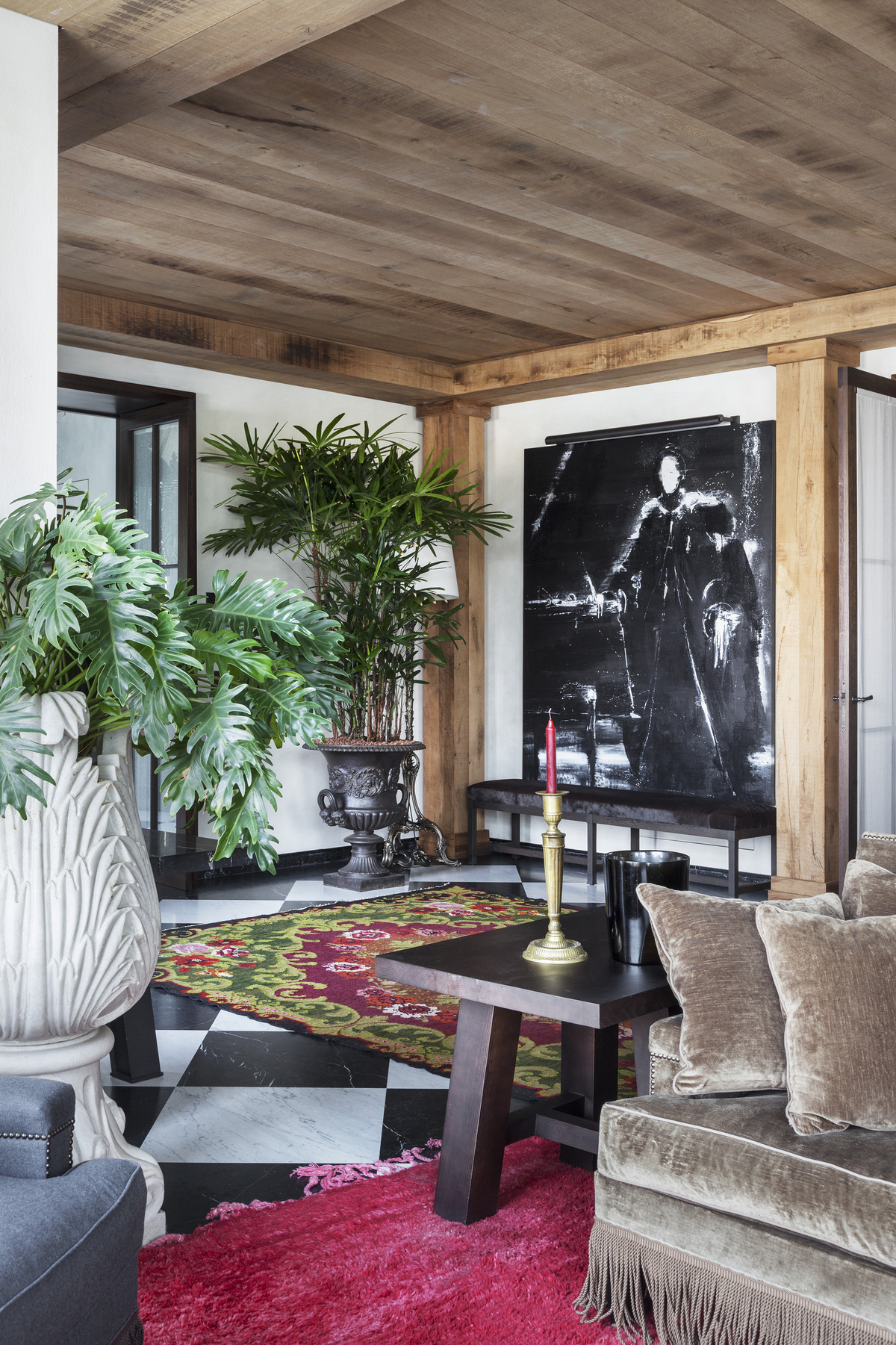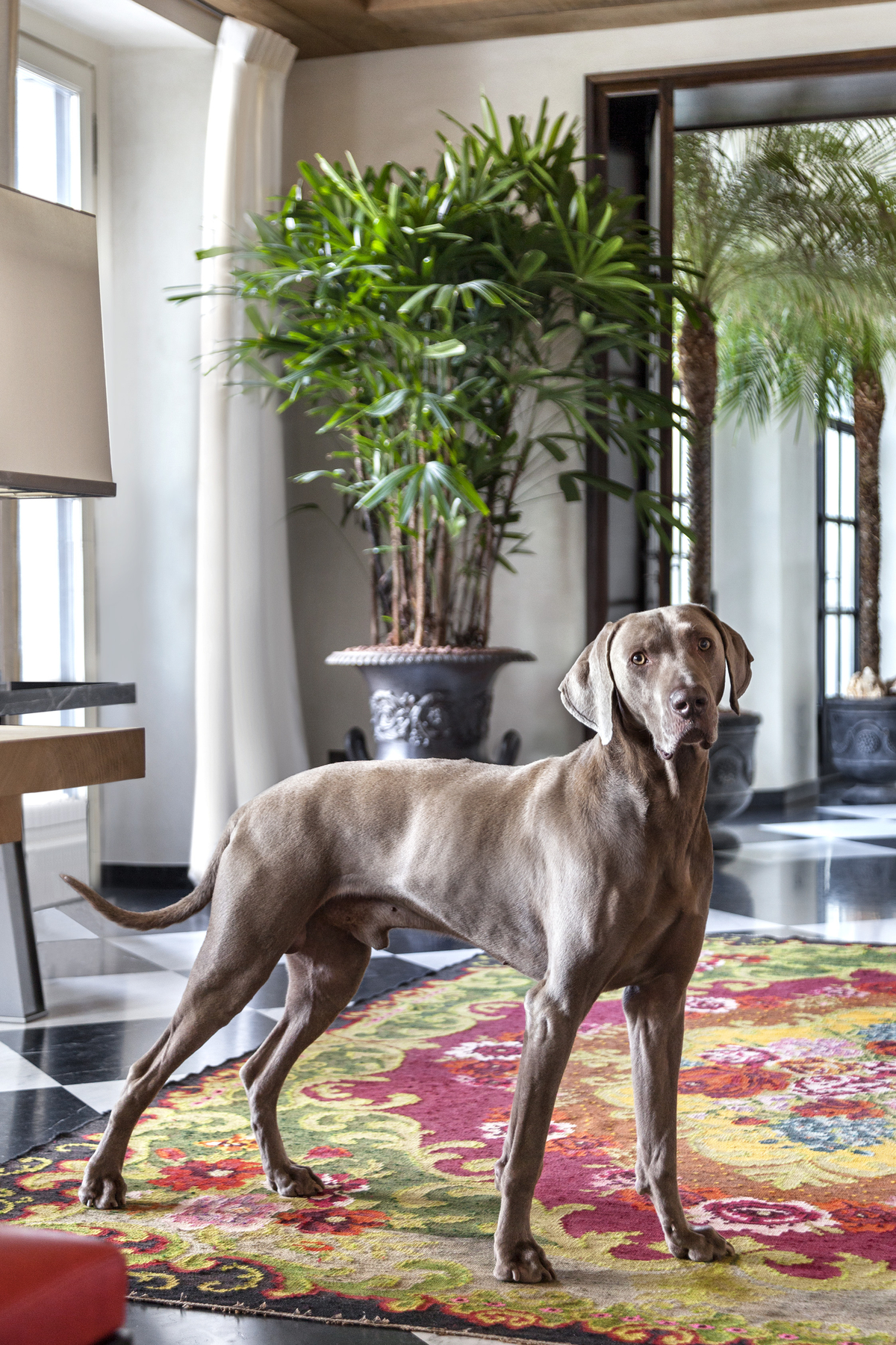Remo Ruffini, the trailblazing chairman and C.E.O. of Moncler, has never been much for convention, even when he was a twentysomething fashion entrepreneur selecting a starter home. Why settle into a serviceable apartment in, say, Milan when you can install yourself in a 19th-century masterpiece that looms over the shoreline of Lake Como? In 1987, after selling his first fashion brand—a purveyor of preppy Americana called New England—Ruffini purchased Villa Palatina, a relatively run-down compound located in the same city where he grew up.
While the compound comprises four residences, Ruffini and his wife, Francesca (the founder of F.R.S For Restless Sleepers), share them with the couple’s sons, Pietro, 30, and Romeo, 27. Around 10 years ago, Ruffini enlisted the Paris-based design firm Gilles & Boissier to weave the structures together and mastermind a full-scale renovation of the house and its gardens.
“Before, the four houses were quite different,” says Ruffini, who has collaborated with Dorothée Boissier and Patrick Gilles on the design of almost all of Moncler’s stores and headquarters since the early 2000s. The objective of the renovation? “To make the house as much Como as possible,” says Ruffini. “We researched all the houses on the lake, and we tried to do something very us, but also something very local. The house is very classic, very clean, and very easy to live in.”
Postmodern yet Quintessentially Italian
Villa Palatina has emerged as a postmodern interpretation of the quintessential Italian villa, with stark white exteriors offset by contrasting black trim and opulent marble floors connecting a series of intersecting spaces. While Ruffini stays on task at a large worktable in the tea room, he is also susceptible to drinking in the magnificent views of the lake provided by his living-room window. “Basically, I stay on the sofa,” he says with a laugh.
Views aside, there are plenty of interior touches to admire. Ruffini collects mainly Italian art from the 50s, 60s, and 70s, but Villa Palatina’s walls are lined with frescoes and paintings from an international coterie of contemporary artists. “I try to mix different cultures with my taste,” he says. Outdoors, restrained, manicured gardens flank a modest slate-lined pool. “A half-hour swim at 7:00 or 7:30 [in the morning] is very good,” he says, admitting that he isn’t an especially dedicated swimmer. “You feel almost as if you are on vacation. Then you take a shower and go in the office.”
Ruffini is susceptible to the magnificent views of the lake from his living-room window: “Basically, I stay on the sofa.”
Before its modern-day incarnation as one of the most-flocked-to vacation spots on the planet, Como was primarily an industry town, with a reputation for silk manufacturing that dates back to the 12th century. For Ruffini, fashion is something of a family tradition—his grandfather owned a textile mill, and his parents founded clothing lines. (Gianfranco Ruffini’s Nik Nik, which specialized in snazzy silk disco shirts, had a moment in America during the 70s.) Remo Ruffini briefly studied at Boston University before returning home to Como and embarking on what would become one of the most successful careers in the history of Italian fashion. In 2003, he purchased Moncler, a nearly bankrupt but once influential outfitter of the 1968 French Olympic ski team and those aspiring to look like it. By the time of its public offering in 2013, it was a global fashion brand with a valuation of $3.6 billion.
Today, Moncler’s main headquarters are in Milan, which is approximately an hour’s drive from Como (on a good traffic day), and while Ruffini is a frequent and dedicated commuter, he occasionally spends the night in his urban pied-à-terre. (Ruffini also owns a brutalist chalet in Saint-Moritz and a roving mega-yacht, the Atlante, which will be summering in Greece.) But it is in Como where he feels most at home. “It’s always in my heart,” says Ruffini, recalling how he learned to sail there at the age of six. “Como is everything.”

